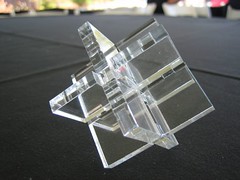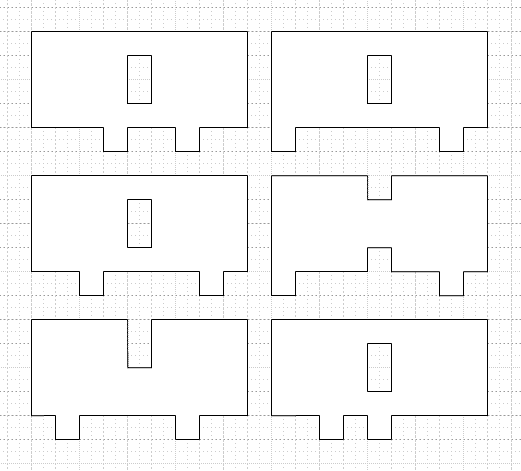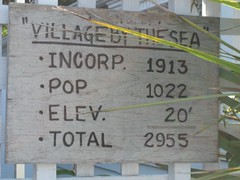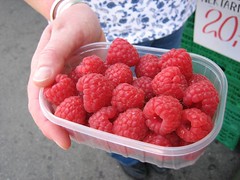Three or four years ago, the folks at the O'Reilly publishing company finally moved into their brand new buildings in Sebastopol, California, after six years of planning and waiting. Very shortly thereafter, they were forced to lay off many of their employees in response to the Great Tech Bust.
Bummer.
This left O'Reilly with a lot of unexpectedly empty space in their buildings, so they decided to bring together a bunch of their collective friends for an unusual kind of self-organizing conference, to be called Foo Camp (FOO = Friends Of O'Reilly). The 150 or so folks there had such a good time that Tim O'Reilly and his team decided to make it an annual tradition, each year inviting some folks who'd been there before and a bunch of others who were new. This year I was privileged to be invited to Foo Camp, and it was held this last weekend.
I flew down to Oakland on Friday afternoon and then drove a rental car up to Sebastopol, arriving just in time for dinner and really having very little idea what to expect. After picking up my badge, getting my picture taken, filling out a little biographical form ("What do you build? What is your favorite tool?"), and receiving my camp swag (a t-shirt and a soft flying disk), I shlepped my little suitcase upstairs to stake out a camping spot.
Yes, the "camp" in "Foo Camp" is literal. Almost all of the attendees camp out, like in sleeping bags, either in tents out on the back lawn or in one or another unoccupied areas of one of the two O'Reilly buildings. I opted for one corner of a big room inside. I didn't bring camping supplies with me on the flight from Seattle, but various O'Reilly folks had sleeping bags, foam pads, and pillows available for loan there in the building.
After dinner that night, Tim gathered everybody in a big room and did the intro thing. After retelling the Foo Camp origin myth (related as best I can remember above), he orchestrated the only kind of everybody-introduce-yourself ritual that could possibly scale to a group of this size: each person got to stand up and say (a) their name, (b) their employer, if any, and (c) no more than three words of bio, introduction, interests, and whatever. Those who exceeded the three-word limit were gonged. (Tim has a really nice, loud, gong for this purpose.) Some people tried to sum up their professional interests in three words, others made it a joke, and some went in quite unique directions (e.g., "baby due tomorrow", which yielded many cries of "go home!"). I ended up going for serious, and kind of slimed my way under the limit with a hyphen: "model-based data collaboration".
After that, we collectively built the schedule of conference sessions. Sara Winge and her team, from O'Reilly, brought out three large foam-core boards covered with a blank session calendar, broken out into a total of about 140 one-hour slots covering Friday night, all day and night Saturday, and Sunday morning. That left plenty of room for nearly everyone to offer a session on something, sometime. Sara tossed a half-dozen marker pens into the audience and quickly stepped out of the way as the crazy, chaotic zoo you'd expect then erupted.
That pretty much marked the end of centrally organized activities for the weekend. Everything else was generated, in advance or otherwise, by the participants. And there was a lot of "everything else".
I attended a session on "Fab @ Home", a visionary Cornell research project to extend existing solid freeform fabrication technology to make a kitchen-friendly machine that can make pretty much anything.
I got to ride a Segway for the first time, using one of several different models (and several homebrew knock-offs) brought to the camp.
One fellow brought a compressed-air-powered, rapid-fire marshmallow gun (seen as the white pipes at left in this shot). Five minutes to load, five seconds to discharge, lots of marshmallows all over the grass.
As you might expect, there were many well-known industry luminaries attending, such as Jeff Bezos, Esther Dyson, Mitch Kapor, Ward Cunningham, Brewster Kahle, Guido van Rossum, and Howard Rheingold.
But there were also many talented and accomplished people who should be far better known than they are, such as playful performance artist Jane McGonigal, Second Life technologist Cory Ondrejka, and Flickr co-founders Caterina Fake and Stewart Butterfield. I expect to be writing more about all of these folks in future entries.
I've attended many informal conferences that are essentially just gatherings of a wide range of talented and creative hacker-types, including the Asilomar Microcomputer Conference and several years of the Hackers Conference, but none of them offered the stimulation and excitement I felt at Foo Camp. It truly lives up to the almost mystical hype that surrounds it. I hope Tim invites me back again next year.




